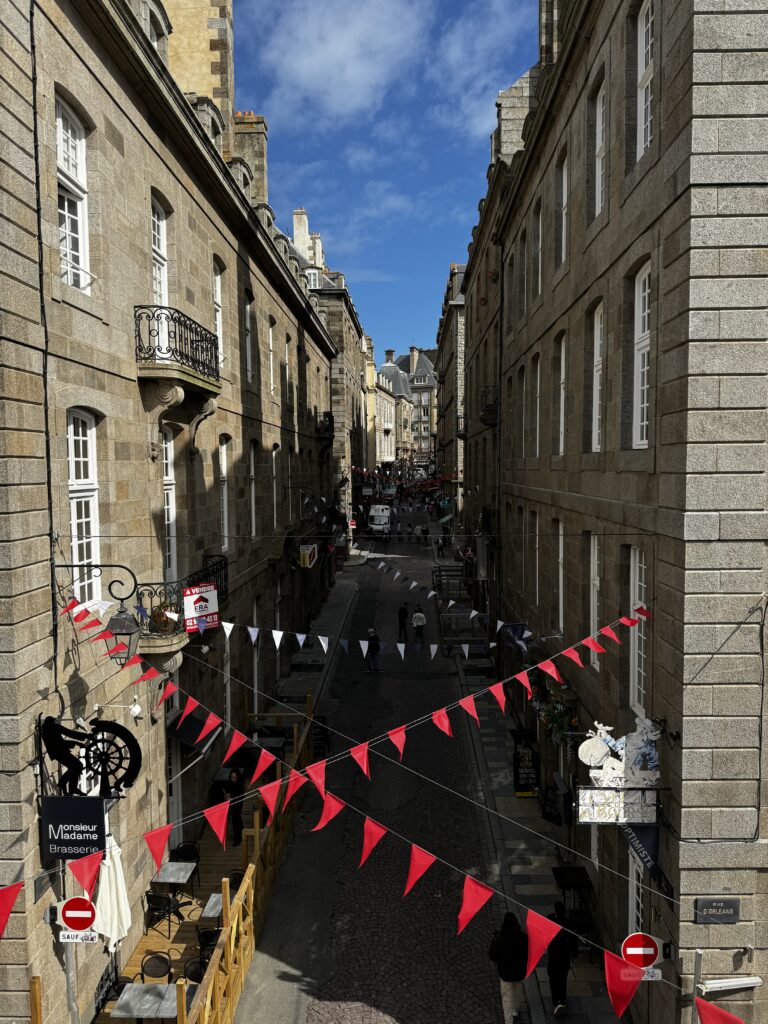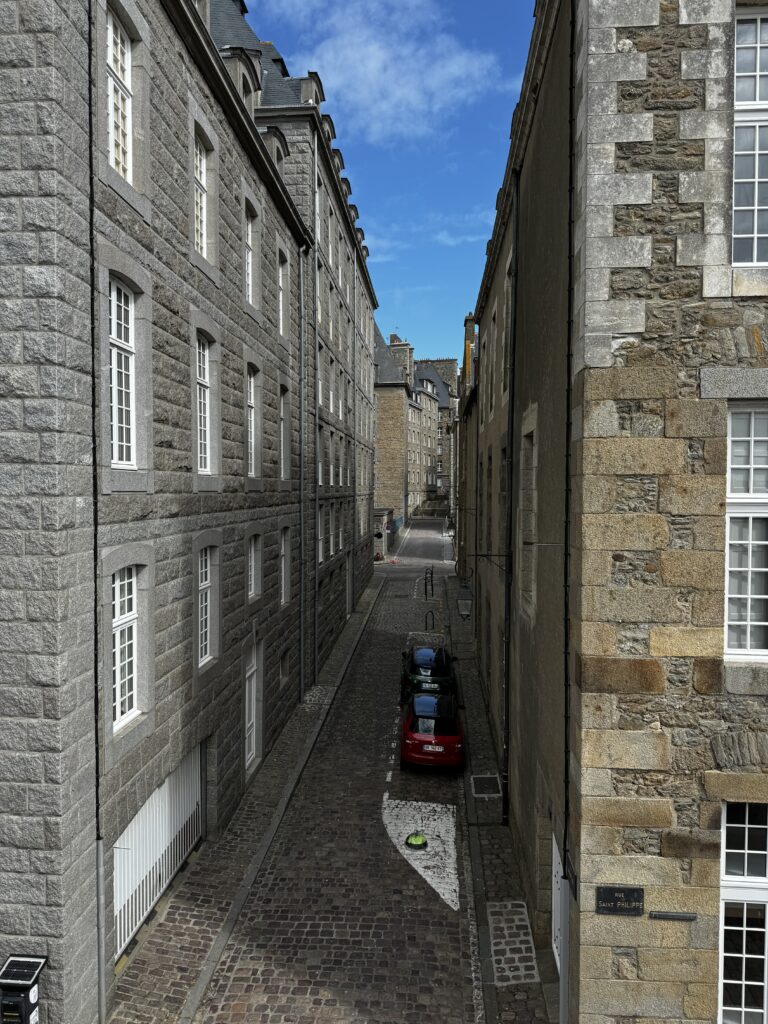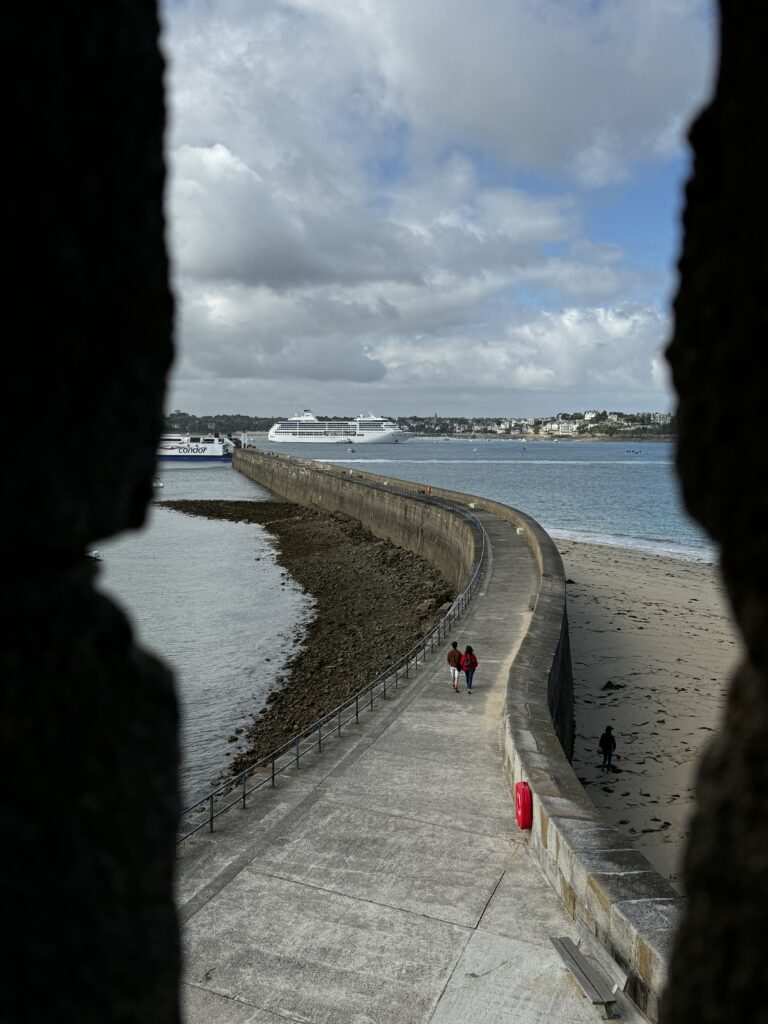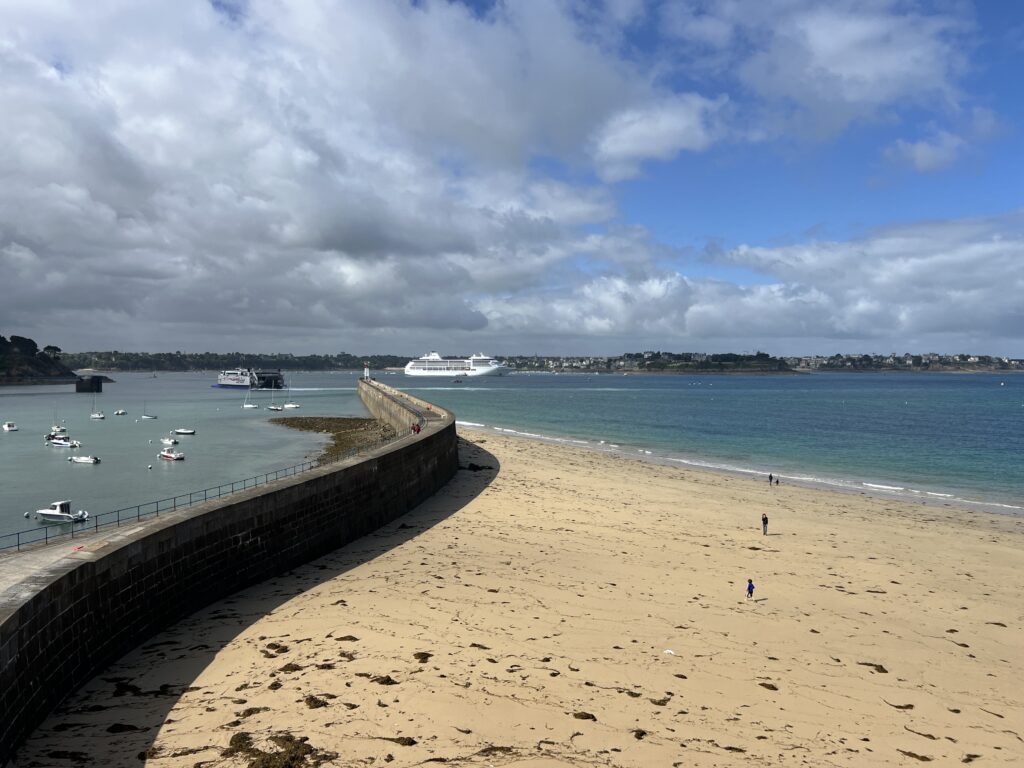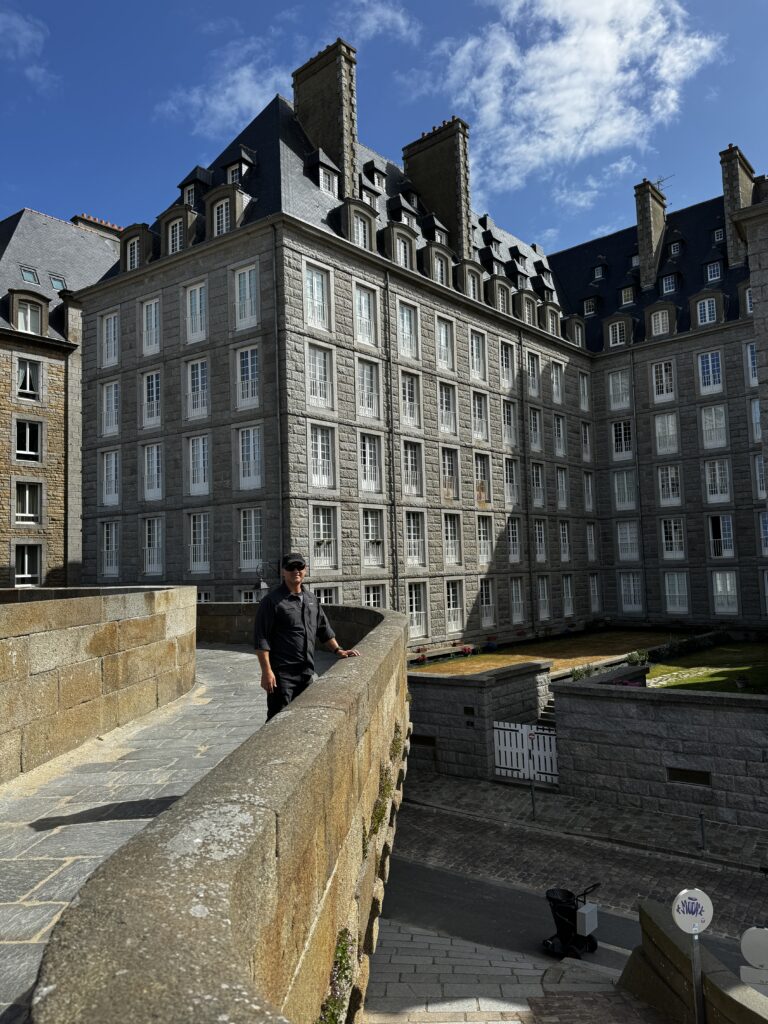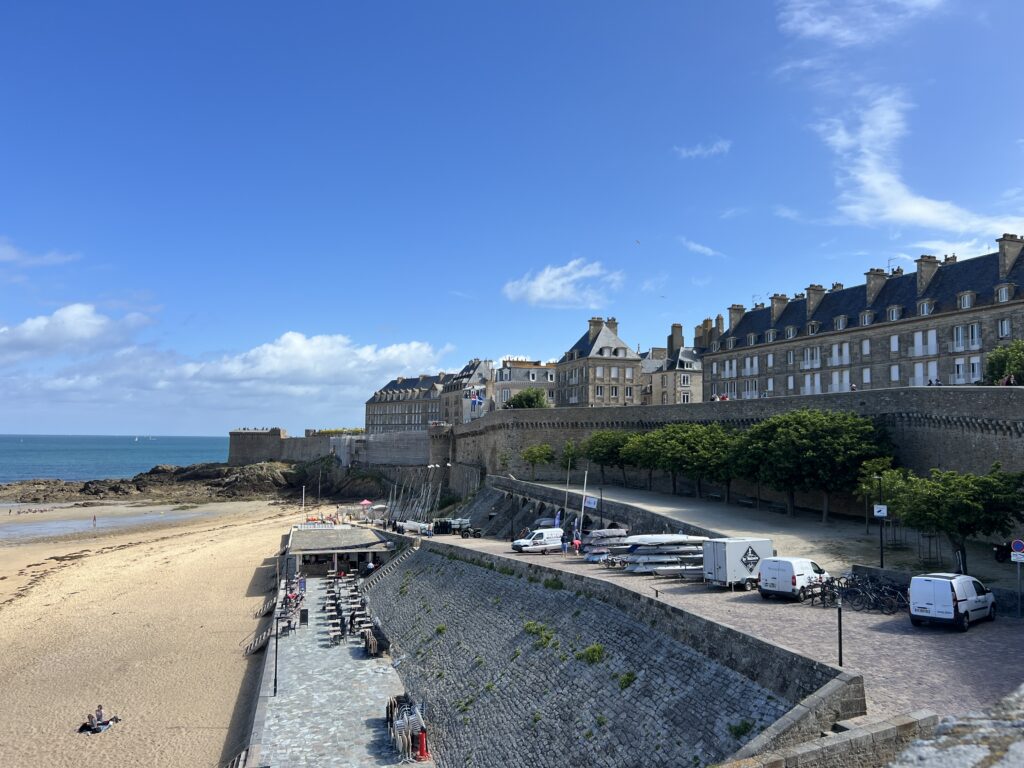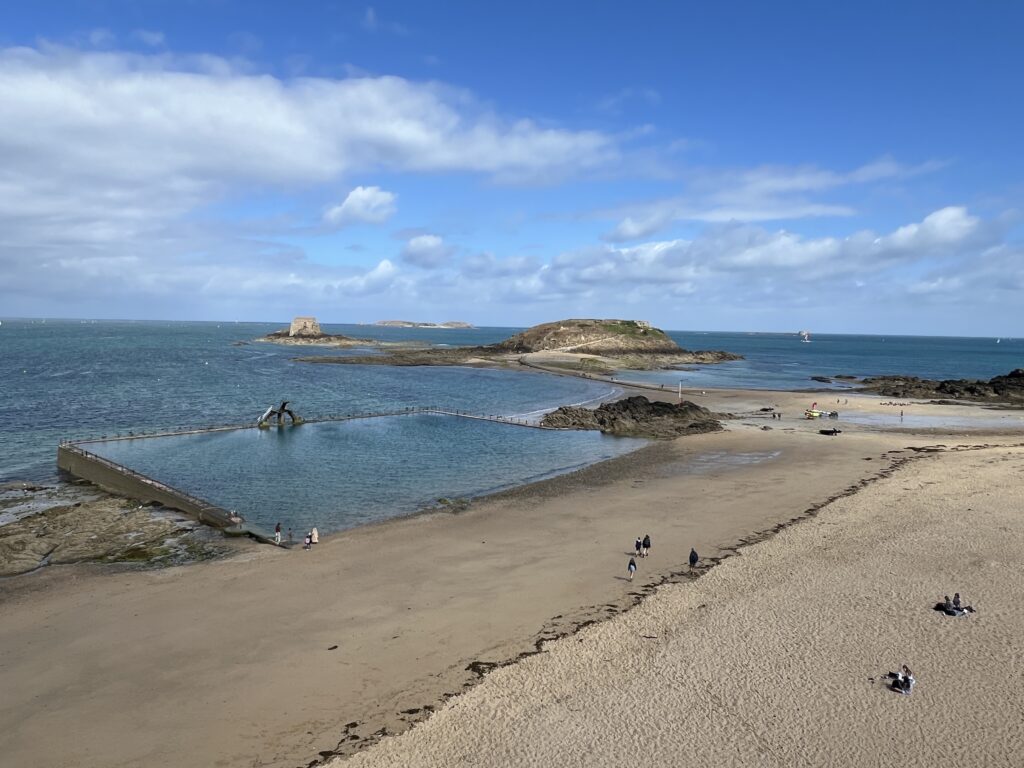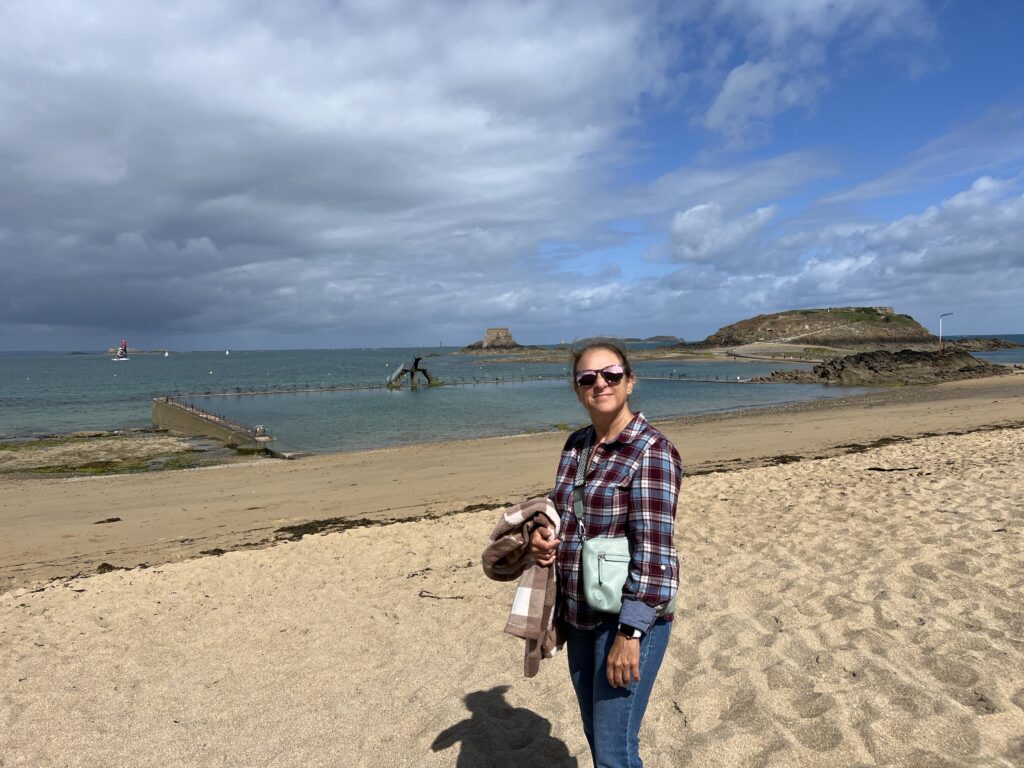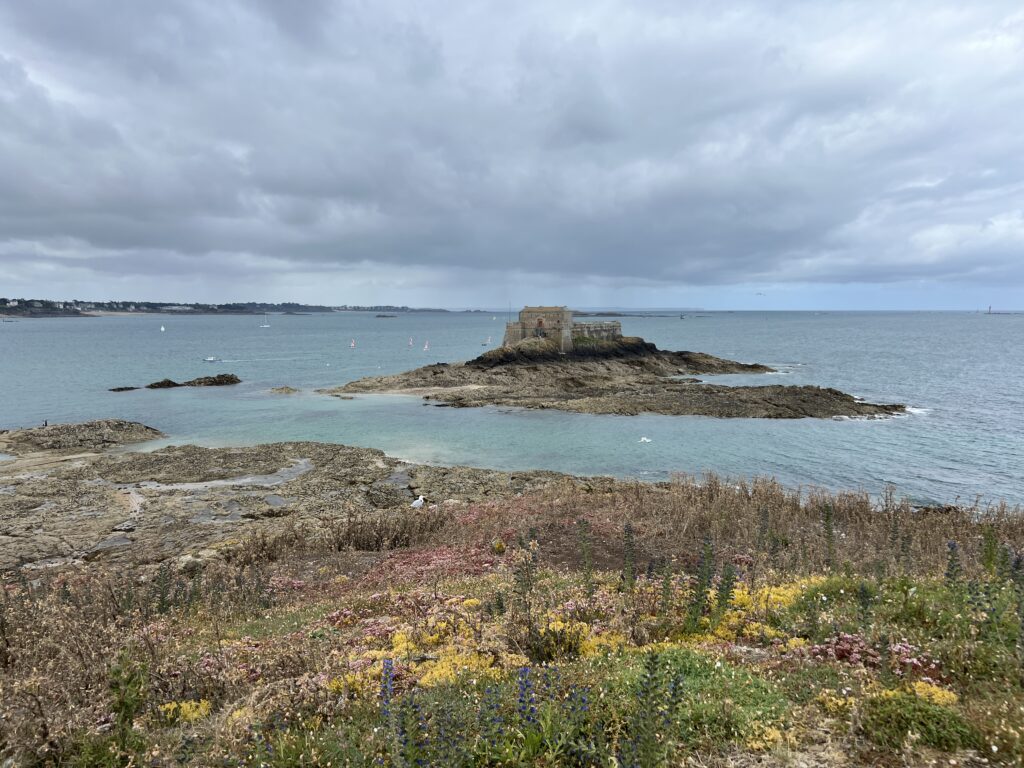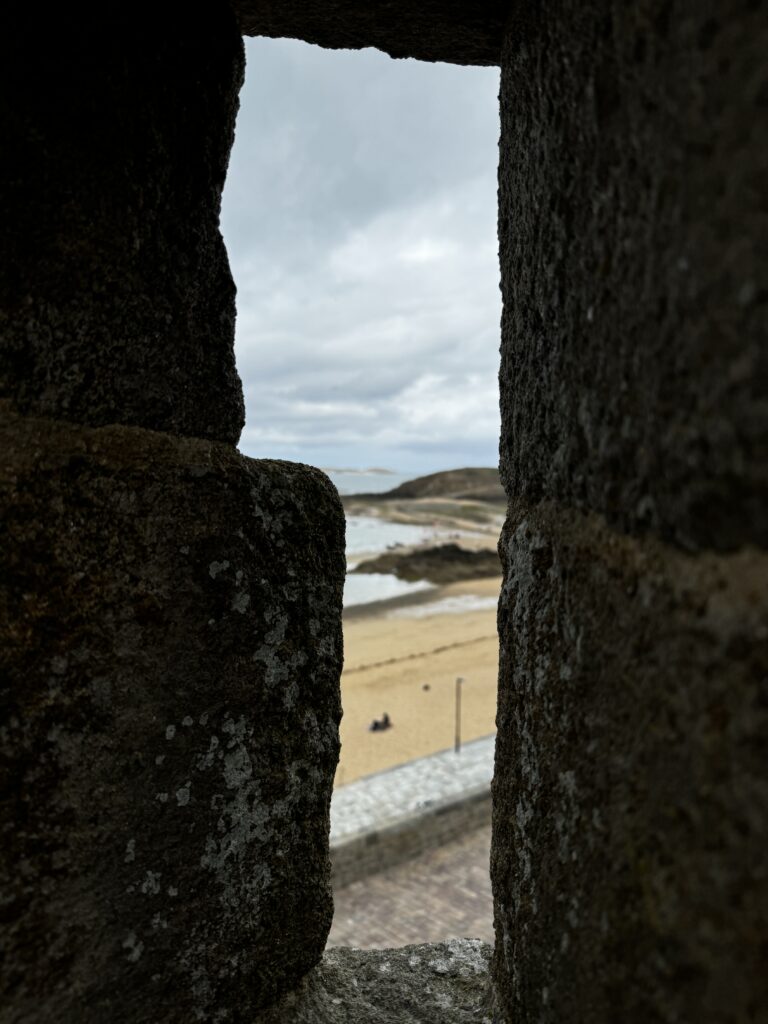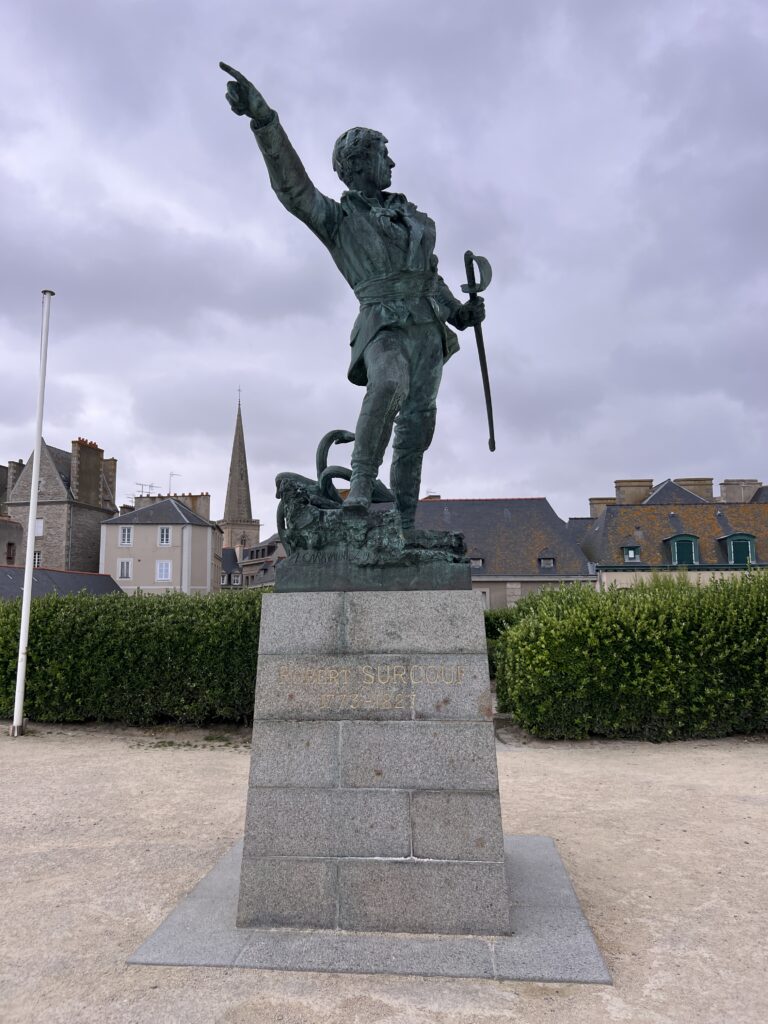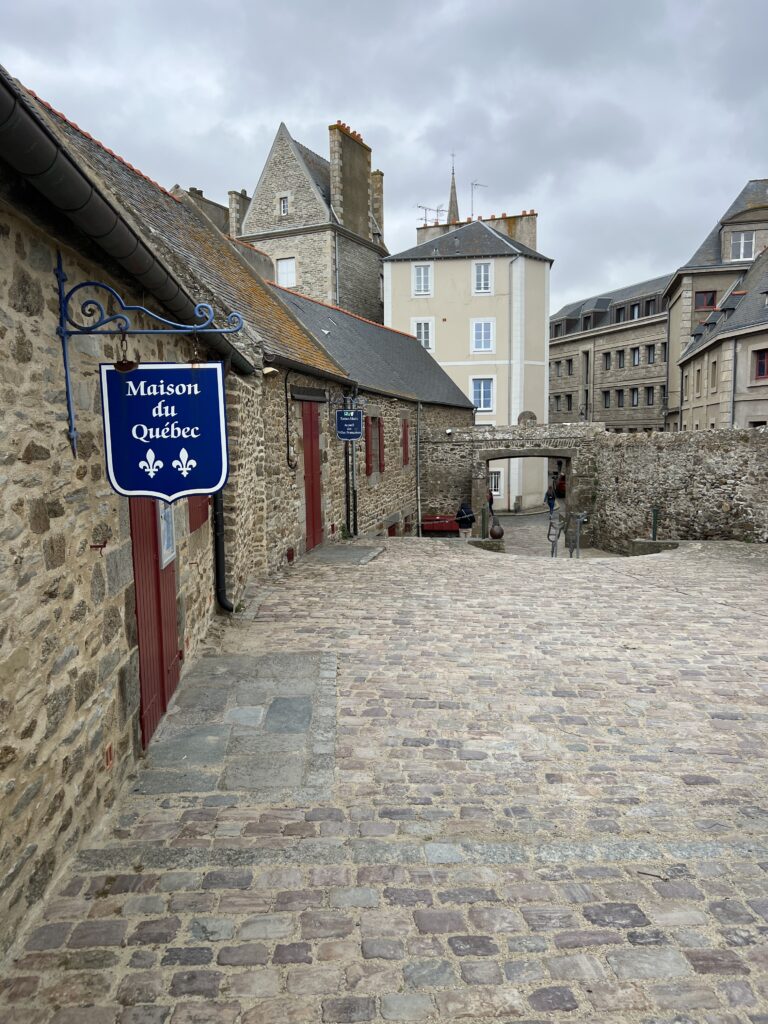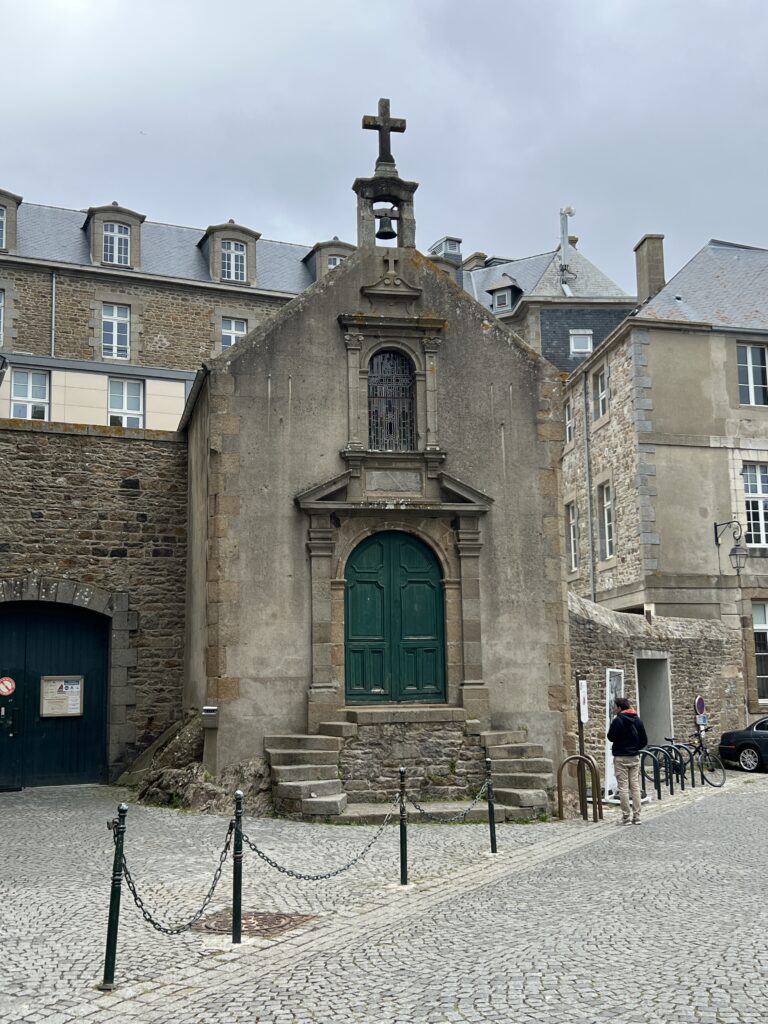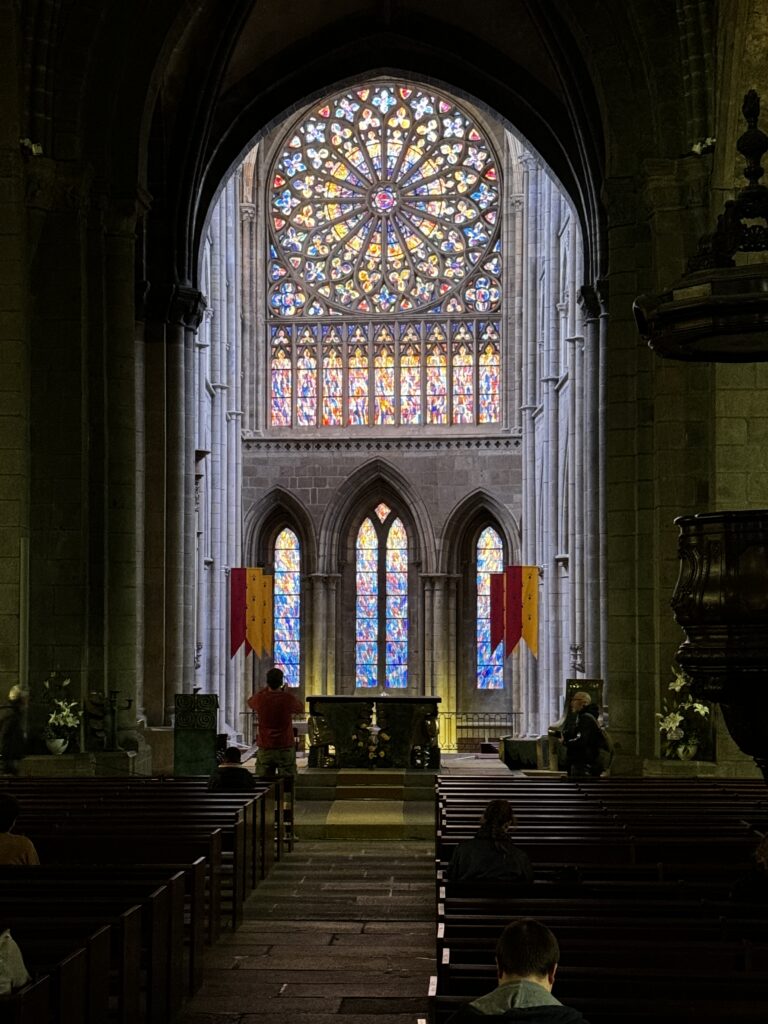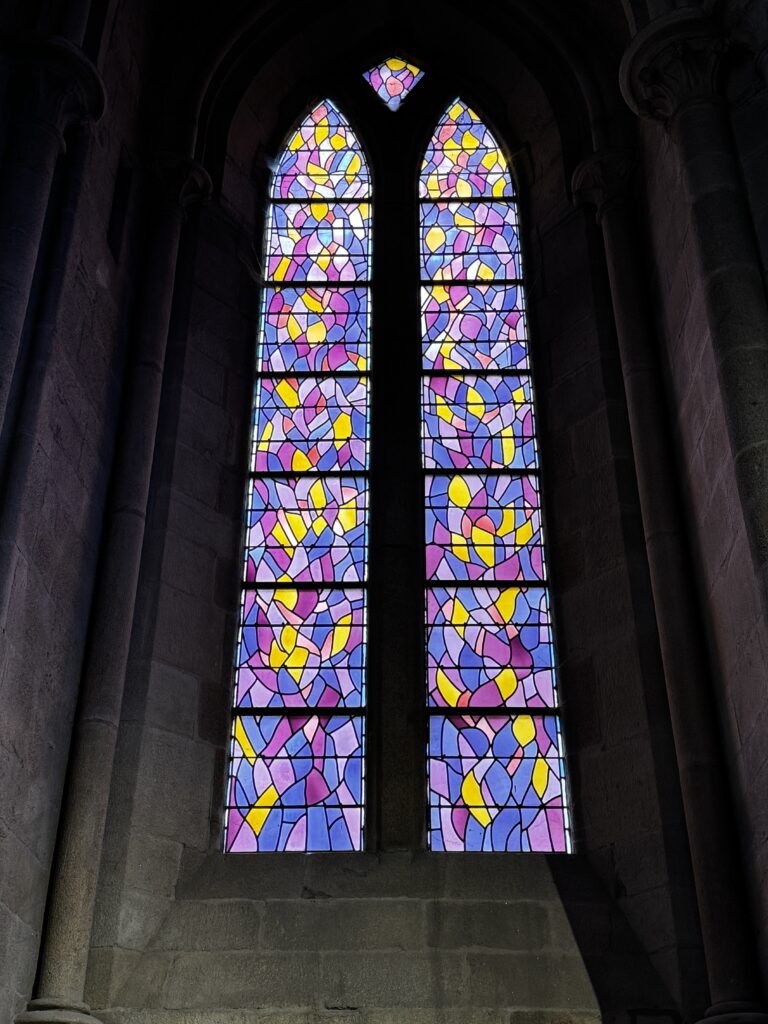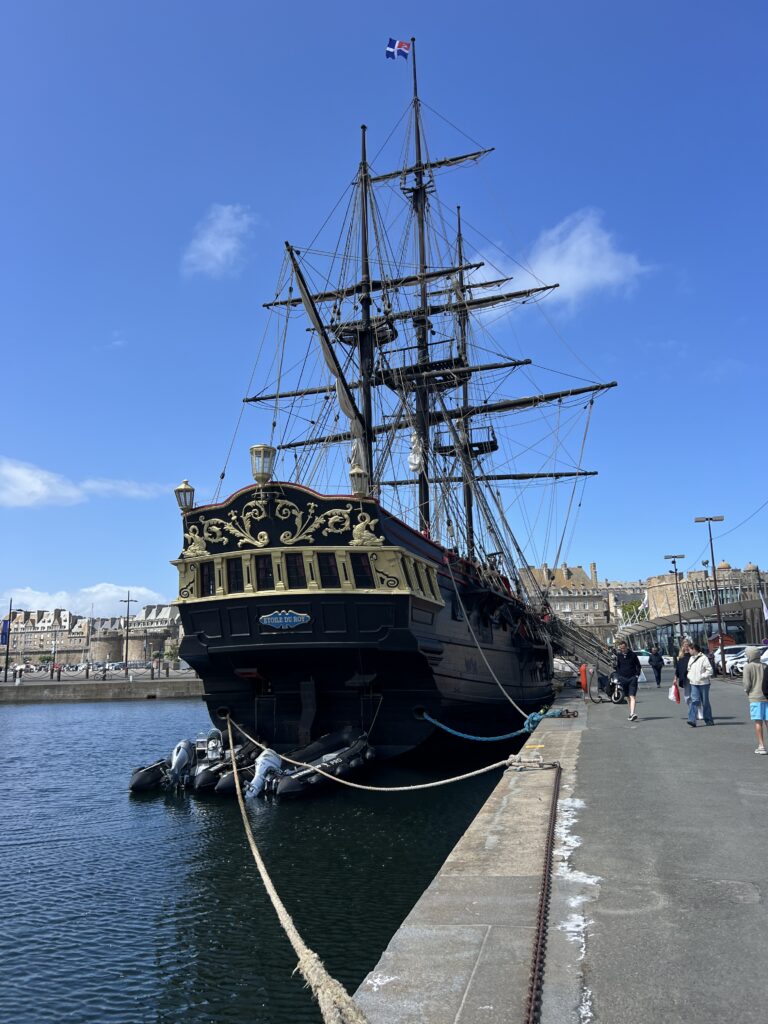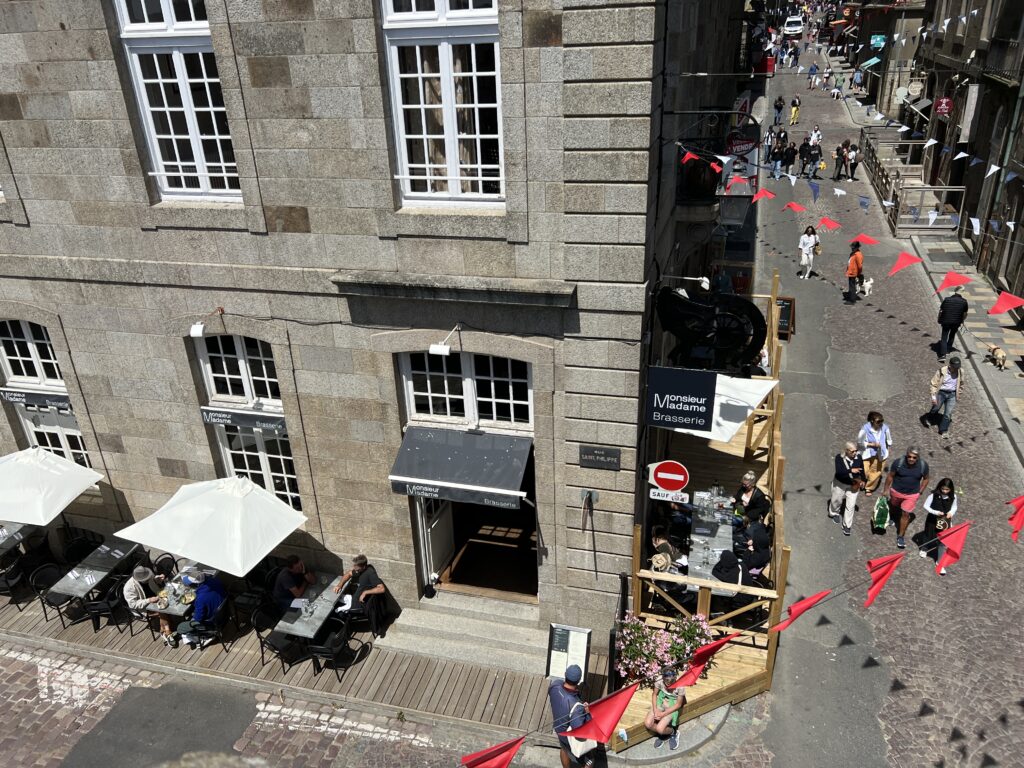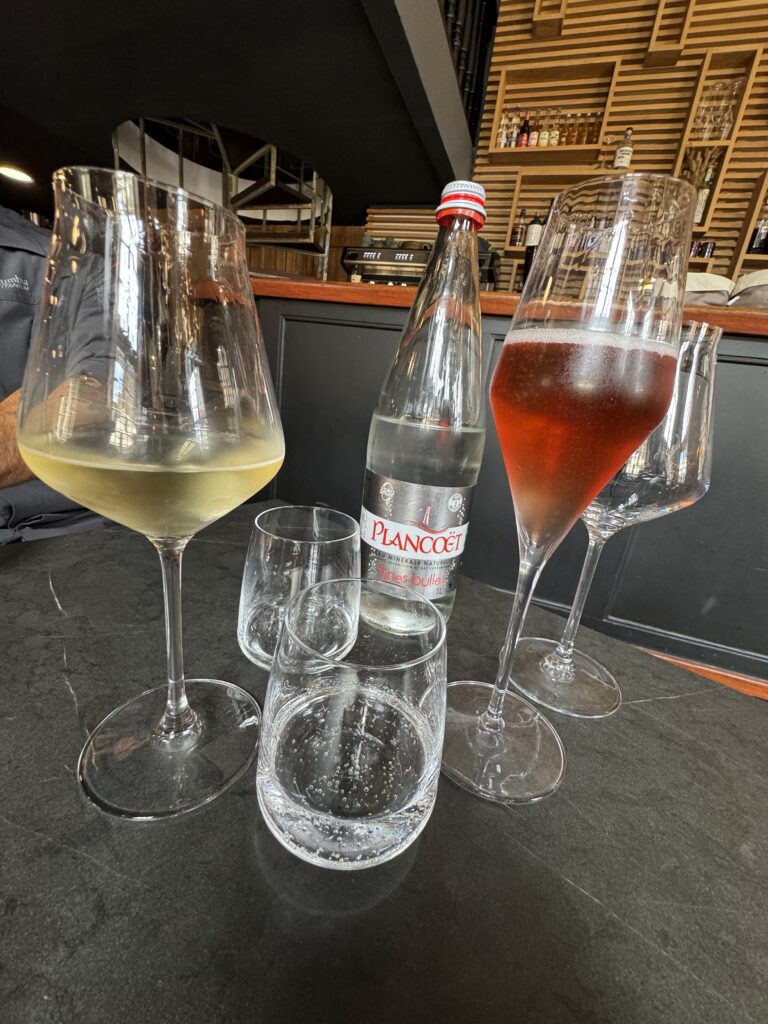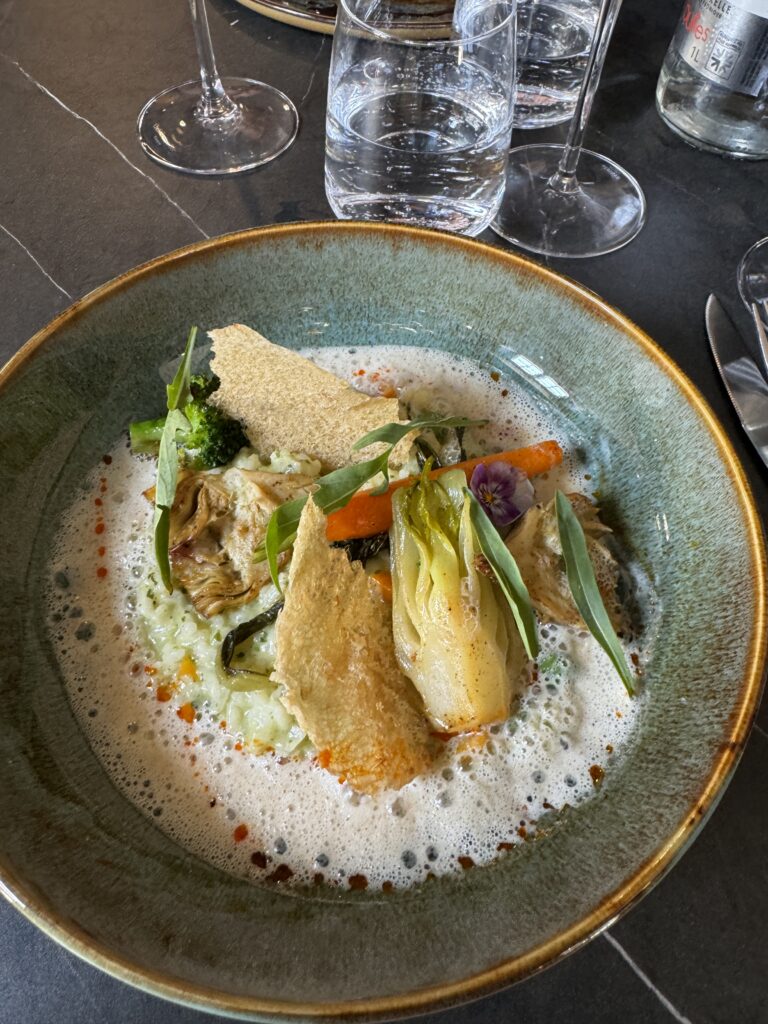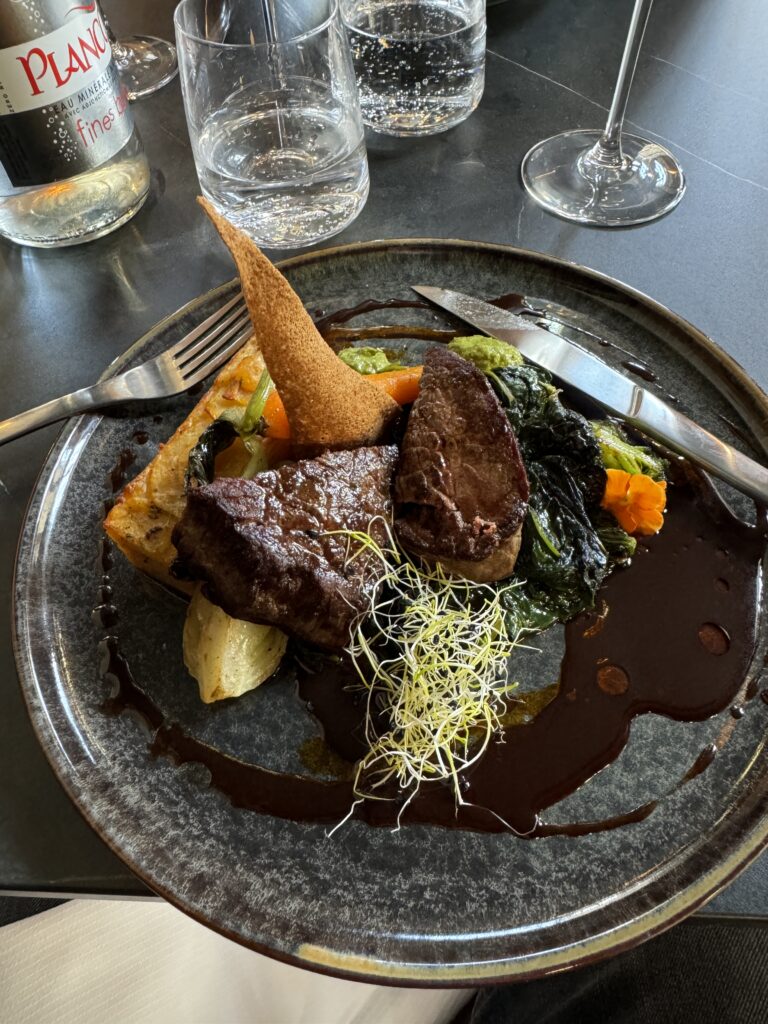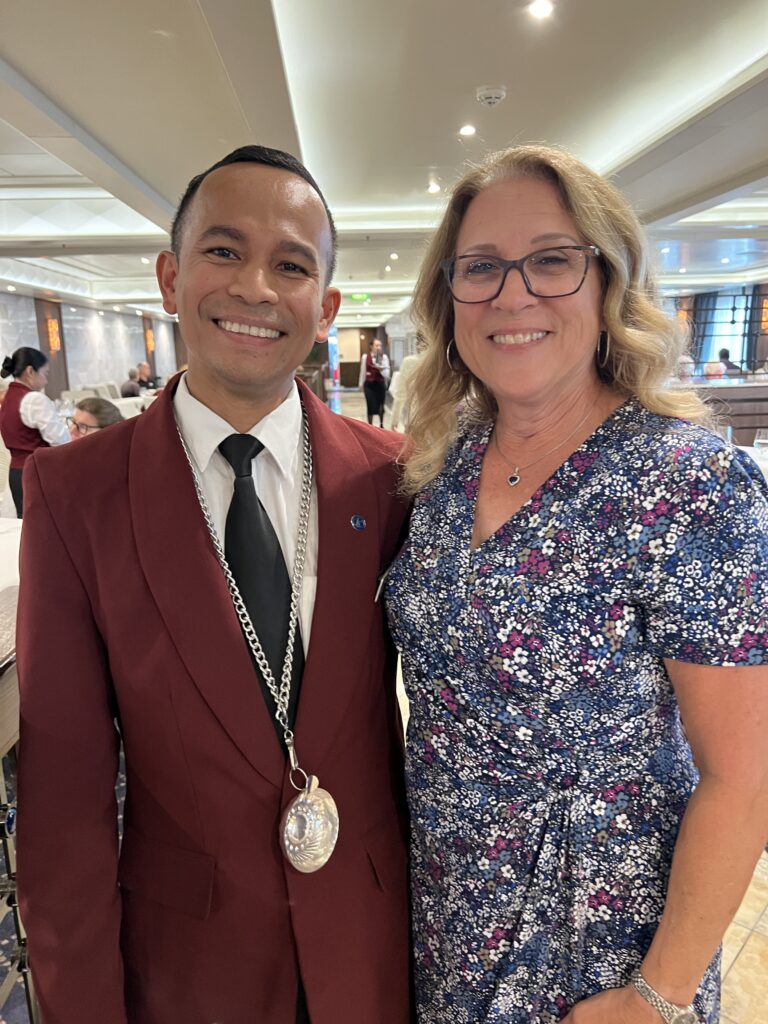Day 15 – July 4, 2024 – Saint-Malo, France
We decided to do our own thing today so had a quick breakfast and waited for those who were doing tours before we caught the tender to the port in Saint-Malo. Saint-Malo is a walled city and is encircled by ramparts, so we had panoramic views of the city and coastline. After walking around the ramparts, we headed to the beach and as it was low tide, we were able to walk to Grand Be’, a rocky island with an old fort that is reachable during low tide.
After returning to the beach, we walked all through the town until we got hungry and then had lunch at Monsieur Madame Brasserie. Once done with lunch, we caught the tender back to the ship.
We had dinner reservations at Chartreuse for 7:30 p.m. so we cleaned up then met up for snacks and happy hour before enjoying our last meal on the ship. Tomorrow, we port in Southampton, and then we will leave the ship and head to London for three days.
This was an amazing trip, and we really enjoyed our first experience on the Regent cruise line. We look forward to sailing with them again! Nite all😊
ABOUT SAINT-MALO (taken from the daily newsletter):
- Saint-Malo, a historic port city in Brittany, France, is renowned for its rich maritime heritage and well-preserved walled old town. Founded in the 1st century BC, the city has a fascinating history that spans over two millennia.
- The city’s name derives from a Welsh monk, Saint Malo, who arrived in the area in the 6th century. Saint-Malo’s strategic location on the English Channel made it an important maritime center, and it gained notoriety as the home of corsairs – French privateers who operated with the approval of the king.
- From 1590 to 1593, Saint-Malo briefly declared itself an independent republic, adopting the defiant motto “Not French, not Breton, but Malouin”. This spirit of independence has remained a part of the city’s character throughout its history.
- The old town, known as intra-muros (within the walls), is encircled by impressive ramparts that offer panoramic views of the city and coastline. You can walk atop these walls exploring the city’s defensive heritage. The narrow streets within are lined with granite buildings, many of which were meticulously reconstructed after WWII, when about 80% of the city was destroyed.
- The city’s beaches are another major draw, with the impressive tides – among the highest in Europe – creating a constantly changing seascape. At low tide, visitors can walk to nearby islands like Le Petite Be, home to the 17th century Fort Vauban.
- Today it has become a key economic center in Brittany, with thriving sectors including tourism, healthcare, marine resources, and the food industry.
- The culinary scene is another highlight, offering local specialties like seafood, crepes, and the indulgent Kouign Amann pastry (similar in fashion to puff pastry, but with less layers). The city also serves as a gateway to explore other parts of Brittany and nearby attractions like Mont Saint-Michel.
